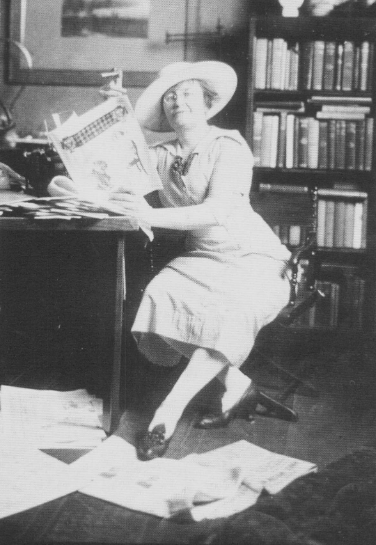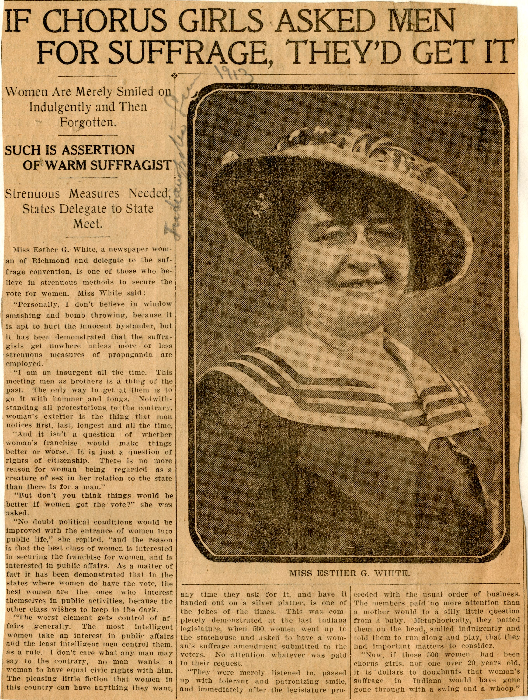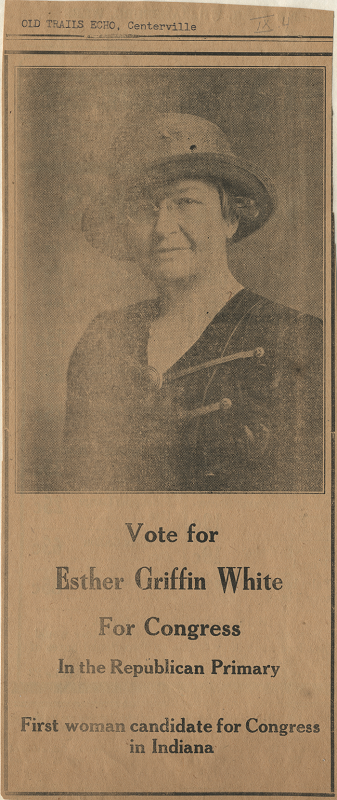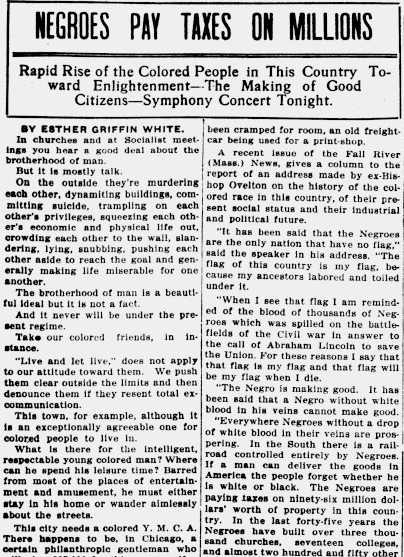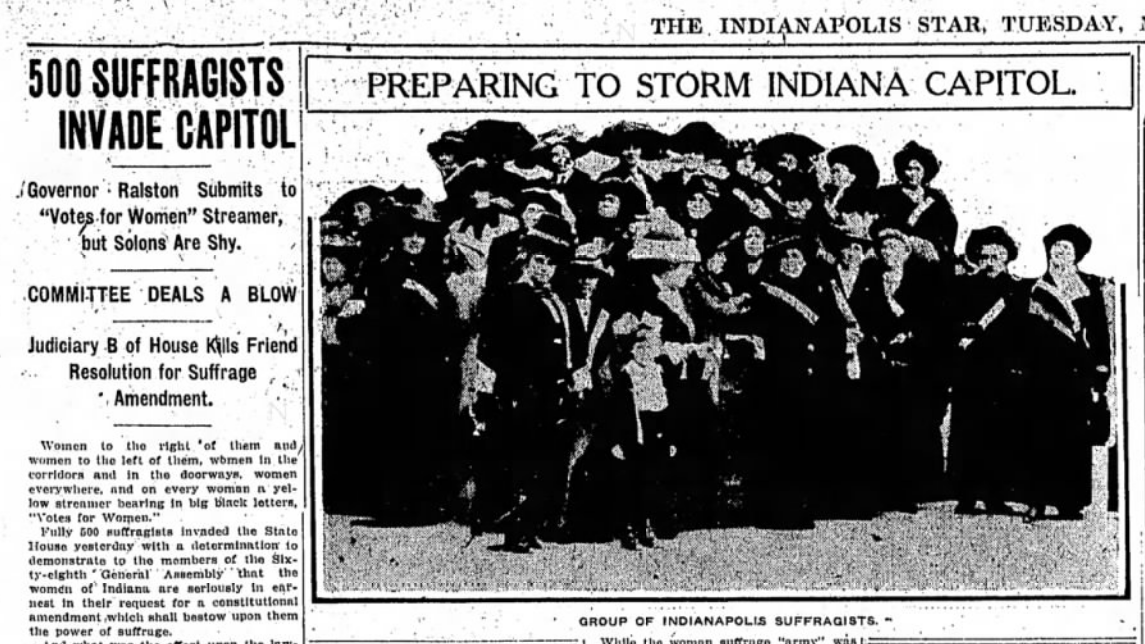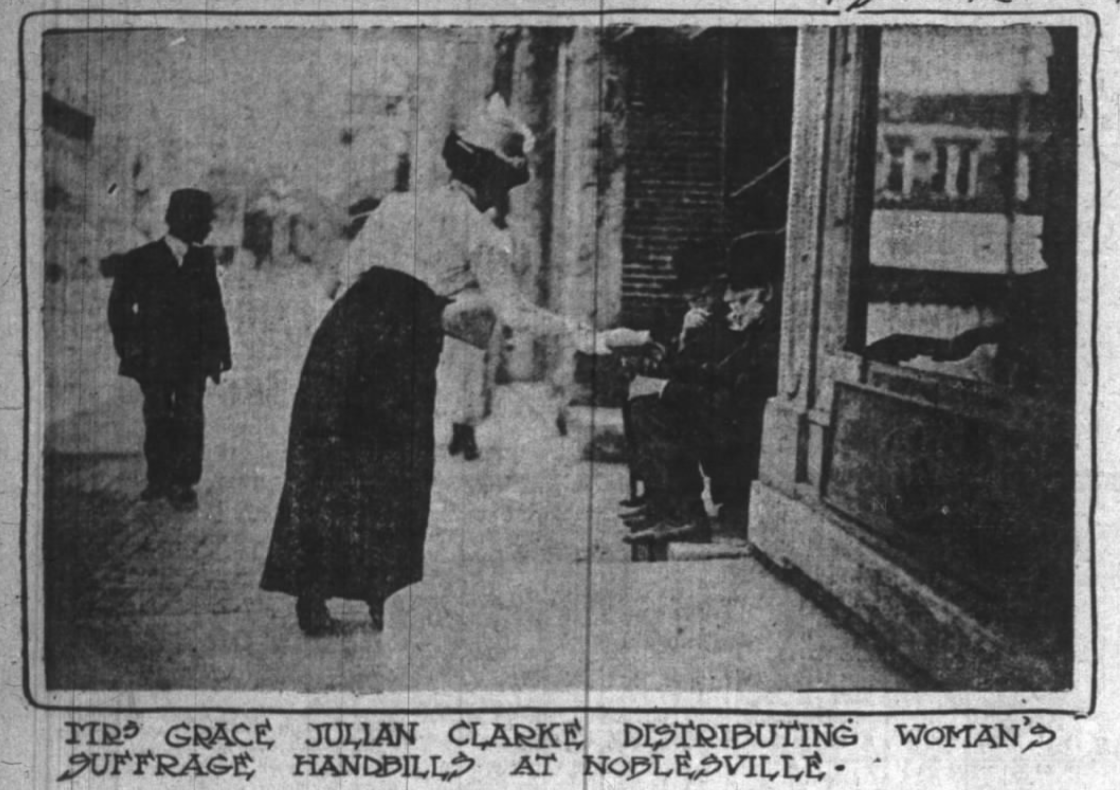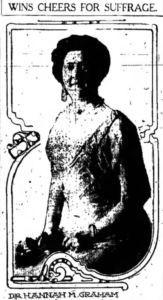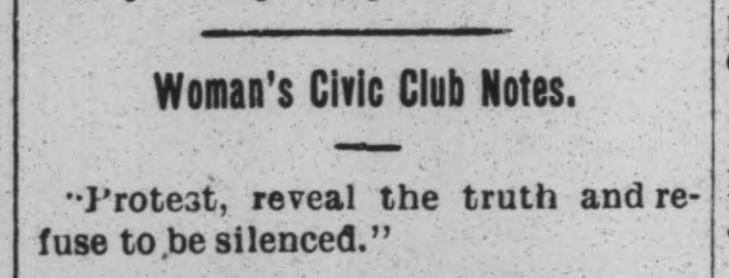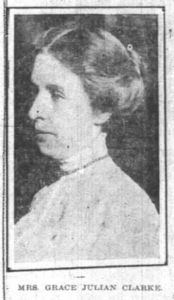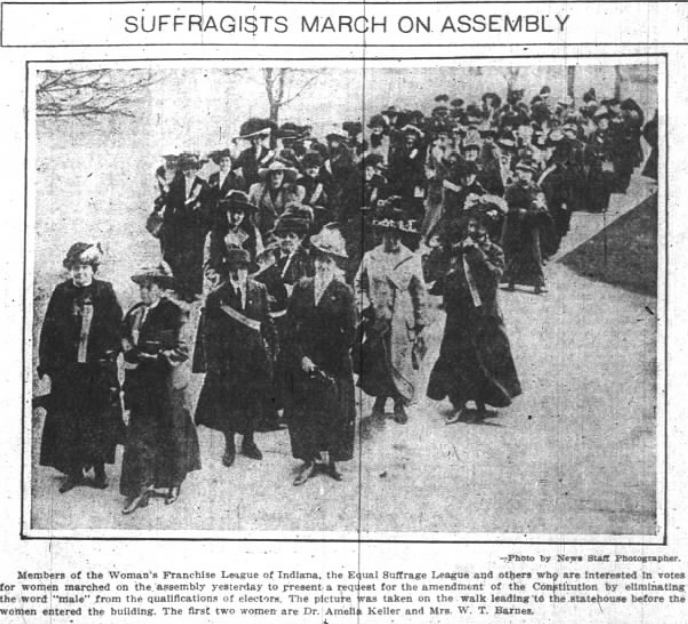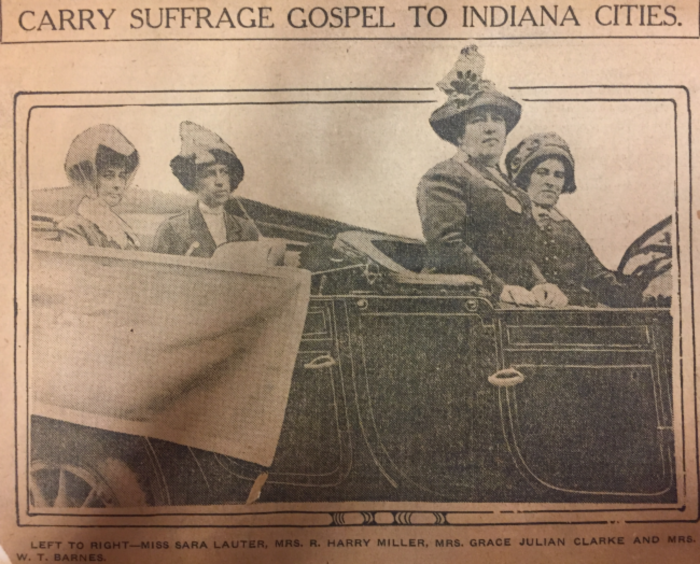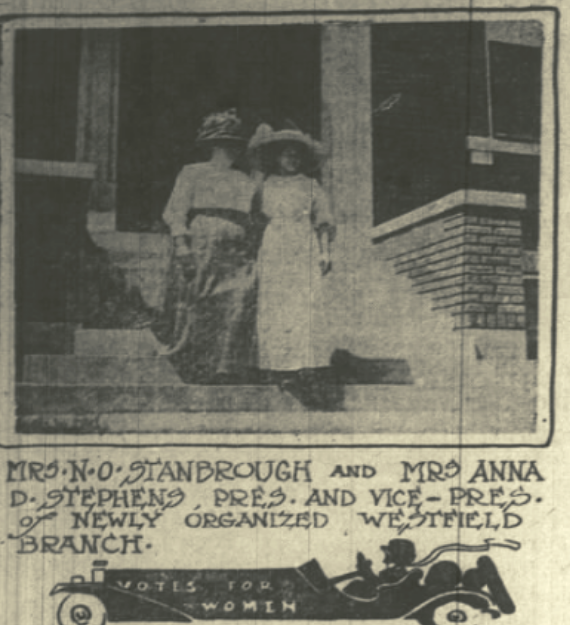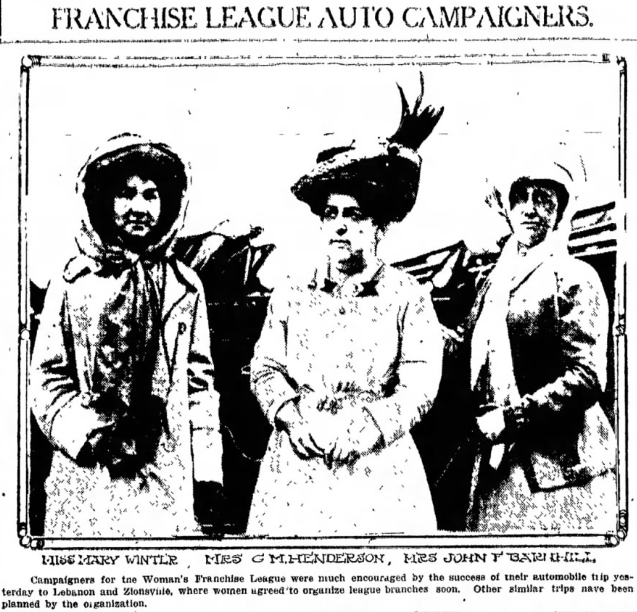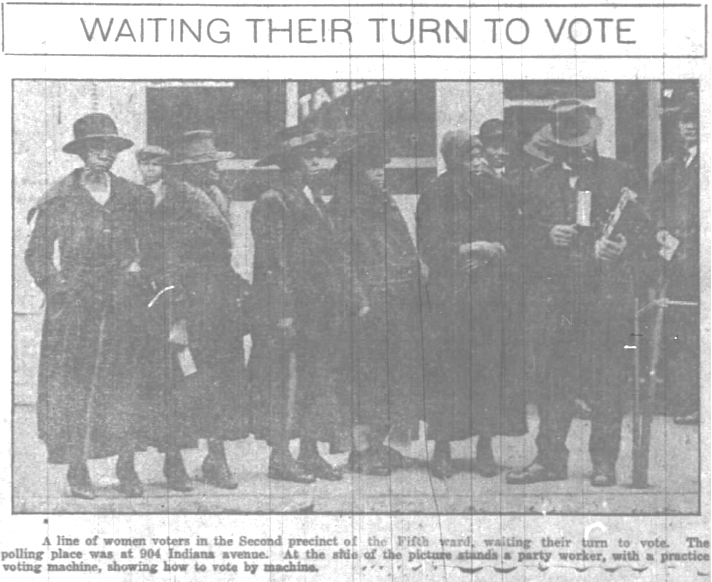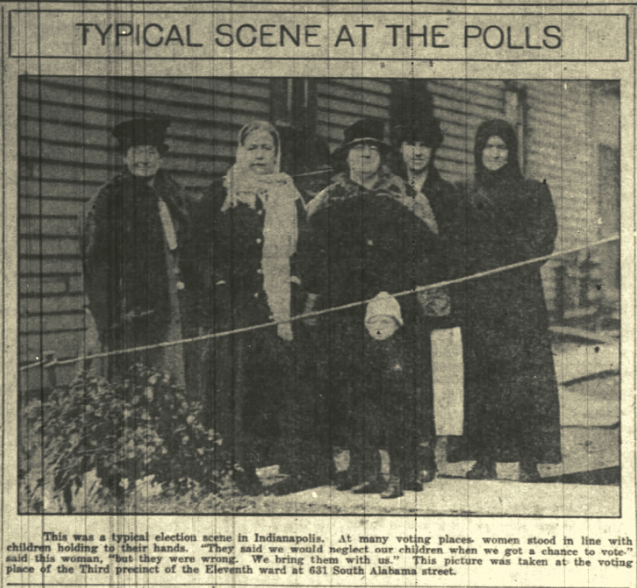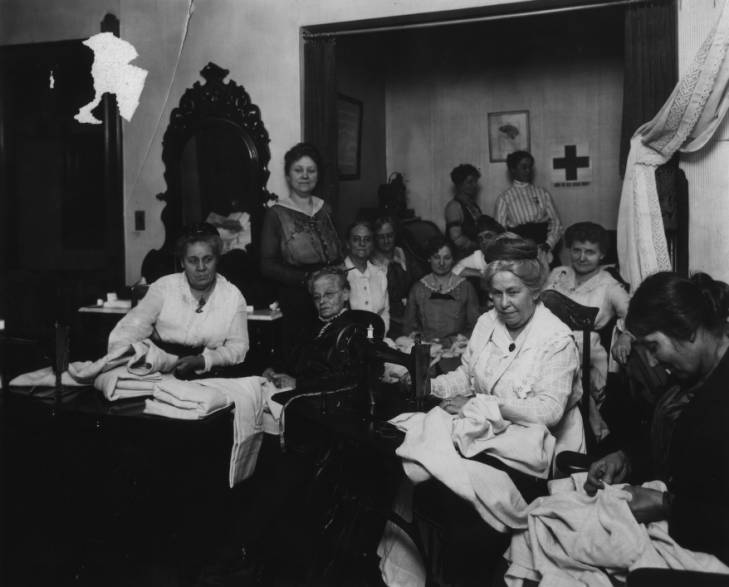
On the precipice of World War I, Hoosier women had reason to be hopeful that they had, at last, won their long fight for suffrage. The 1917 legislative session brought about three major suffrage measures, all of which passed. But the constitutionality of suffrage bills would soon be challenged, and when the United States formally entered the war on April 6, 1917, Hoosier suffragists and clubwomen stood at a crossroads. Should they continue fighting for the vote or should they pause their efforts to focus attention on assisting the homefront?
Historian Anita Morgan noted that during the Civil War, “women had dropped suffrage campaigning in exchange for tackling war work and thought, erroneously, that war work would win them suffrage. That disappointment yet festered, and this time, they would not make the same mistake.”[i] In fact, Dr. Morgan asserted that “what the war managed to do was to finally focus the energies of all these suffragists and club women so they acted in concert for one goal—win the war and in the process win suffrage for themselves.”[ii] Leaders believed that their best response to the U.S. entering World War I would be to support its efforts entirely while simultaneously continuing the fight for suffrage. Doing so would put President Wilson in their debt and earn the National American Woman Suffrage Association valuable supporters.[iii] It would also, incidentally, afford women a unique experience in which to hone their public speaking and organizational skills.
***

“Never again will suffrage be decried or ignored in Indiana,” declared fliers sent to women across Indiana by Marie Stuart Edwards, president of the Woman’s Franchise League (WFL). Edwards wrote to Indiana Federation of Clubs’ members around the state reporting that suffragists were intensifying their efforts, regardless of the war, writing: “plans are being made to carry the fight and you will hear about them.” She encouraged Hoosier women to “emphasize the relations between suffrage and patriotism” to enhance their credibility as future-voters. By combining the war effort with suffrage efforts, women could now band together and show the country and government why they were worthy of the vote. Edwards went on to say that “real patriotism demands that we serve the Government no matter how out of patience we get with state authorities. If possible, make a showing as a LEAGUE.”[i]
Indiana women, following Edwards’s suggestion, quickly mobilized. Reports from the WFL show that Lenore Hannah Cox requested names of prominent women from across the state, who might telegraph congressmen in regards to the passage of the federal suffrage amendment when called upon to do so.[ii] Financial reports of the Woman’s Franchise League similarly show that the league began collecting Liberty Bond donations as part of its budget, promoting the drive through their newspaper, The Hoosier Suffragist.[iii]
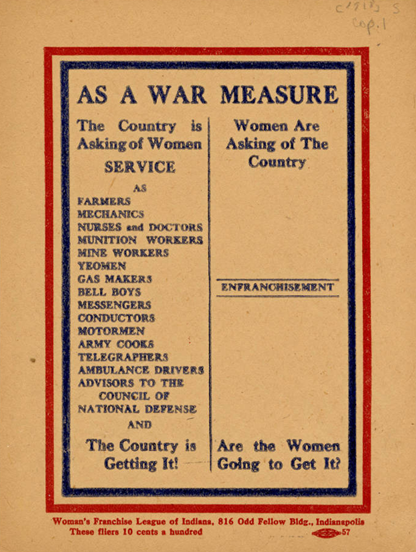
Prolific columnist and Indianapolis suffragist Grace Julian Clarke wrote in the Indianapolis Star, “more depends upon us in this matter than many persons realize, and it is a work that only women can perform.”[iv] She quickly assumed a leadership role in her community and volunteered to lead a sign-up station for the Red Cross at the Irvington post office. Other prominent club women around Indianapolis followed suit.[v] Clarke also introduced a resolution at a “patriotic meeting” held at the Y.W.C.A. in Indianapolis that urged local women to “pledge . . . to do our bit in war emergency relief work, and to induce others to do the same.”[vi] About 400 women registered their intent to take part in war relief work after Clarke’s address. By May 1917, Clarke had been appointed to supervise WFL war work, which required Clarke to process all of the records from the war work registration drive.[vii] Registrars had asked women to complete registration cards promising to help with some type of government service if called upon during the war.[viii]
In October of 1917, Hoosier suffragists like Clarke joined the “fourteen-minute women,” speaking before clubs, church societies, and other women’s organizations for about—you guessed it—fourteen minutes on the subject of food conservation. The group was “one wing of the army of talkers, pledgers, advertisers and boosters” that the local branch of the United States food administration, led by future U.S. president Herbert Hoover, expected to disseminate important facts regarding food conservation. The “fourteen-minute women,” organized by suffragist and former WFL secretary Julia C. Henderson as part of the speakers’ bureau for the Seventh District for food conservation work, collaborated with “four-minute men.”[ix]

Members of the “fourteen-minute women” included other locally prominent women in hundreds of speaking tours during the war, which helped develop their public speaking skills.[x] In January of 1918, the “fourteen-minute women” were enlisted in state service after their effort had been found to be “so effective that it was deemed advisable to enlarge and extend it beyond the 7th District.”[xi] This expansion included training women to speak on activities that were expected of women in the General Federation of Clubs as an aid in prosecuting the war, with an emphasis on food conservation. Clarke, among others, received unique training and experience in public speaking as a result, further elevating her reputation as a public figure. Of this link between war work and the drive for enfranchisement, she contended:
we [women] are truly patriotic, not only by knitting and doing the conventional kinds of war work, but by the utmost exertions to secure for the women of our country their rightful place as equal partners in the tremendously important enterprise of government . . . Women of all religious denominations, club women, women who work whether in the home or in the many fields outside, young women and old, colored women and white, all women with sufficient wit to discern right from wrong, daylight from night, should enlist in the present suffrage drive.[xii]
Women quite literally utilized war work to demonstrate their deservedness of full-enfranchisement. The state’s Constitutional Convention law was challenged in court on the grounds that it was an “unnecessary public expense,” and the partial suffrage law was challenged for simply costing too much to effectively double the number of voters in the state. Responding to these assertions, Hoosier suffragists attended an Indiana Supreme Court hearing, bringing supplies most likely as part of their “knitting for soldiers campaign to support the war effort, and stayed through four hours of arguments.” In their newsletter, The Hoosier Suffragist, WFL members further challenged these claims, writing “‘Mr. Hoover says he expects the women of this country to save enough to pay for the war,” and yet some men complained that “ballot boxes and ‘fixings’ for women to vote will cost at least six thousand dollars.” The author quipped “If we pay for the war can’t the men scrape up the money for those ballot boxes?”[xiii]
***
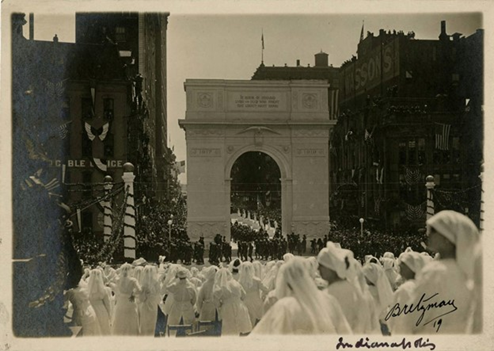
On May 7, 1919, 20,000 jubilant men and women cheered returning soldiers at the Welcome Home Parade in Indianapolis. The parade stretched for thirty-three blocks, and left the city awash in red, white, and blue. Trains unloaded returning Hoosier soldiers who displayed their regimental colors. Many attendees had survived the 1918 influenza pandemic, nursed the sick at Fort Harrison, or lost friends and relatives to the pandemic. While suffragists celebrated the end of the war and the dwindling of a catastrophic pandemic, their struggle for full-enfranchisement endured.
According to Talking Hoosier History, Congress finally passed the 19th Amendment to the Constitution in June 1919, which then required thirty-six states to ratify in order to become law. Indiana suffragists immediately began calling for Governor Goodrich to convene a special session of the General Assembly to ratify the 19th Amendment. The governor, however, wanted to wait to see what other states would do before spending time and money on a special session. Months later, with still no sign of a special session, suffragists turned up the pressure and Franchise League president Helen Benbridge delivered petitions signed by 86,000 Hoosiers.
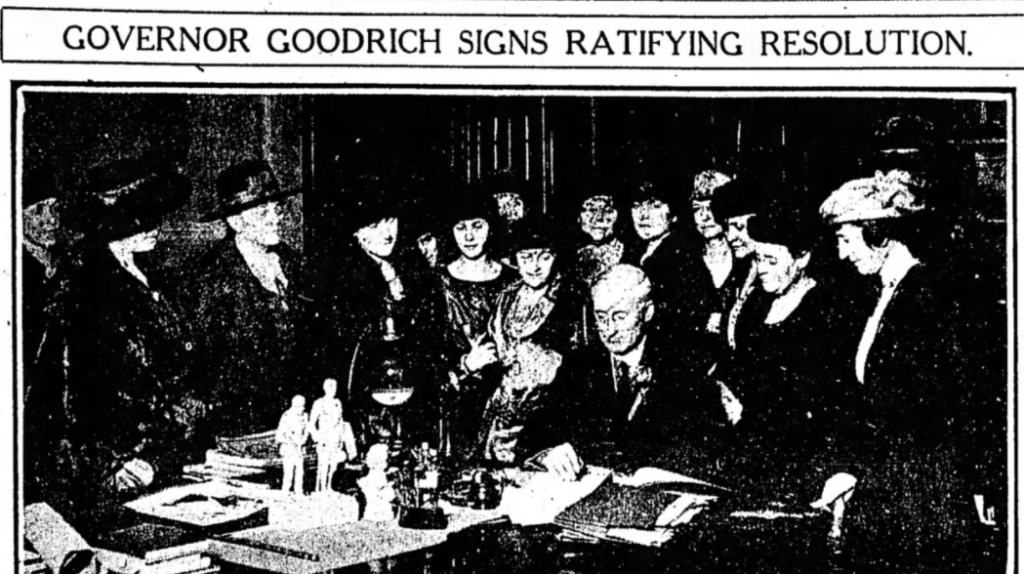
Their determination proved effective and Governor Goodrich agreed to call a special session. Historian Anita Morgan noted that Hoosier “legislators who spoke in favor of the [suffrage] measure gave women’s war work, which to them signified women’s loyalty, as the reason to support.”[i] On January 16, 1920, Indiana ratified the 19th Amendment to the U.S. Constitution. The Indianapolis News reported on the reaction of women at the statehouse when they heard the news:
As soon as the house passed the resolution, a band in the hall began playing ‘Glory, Glory Hallelujah.’ Women joined in the singing. Scores rushed into the corridor and began embracing. Many shook hands and scenes of wildest joy and confusion prevailed.
The celebrations continued when, on August 18, 1920, Tennessee became the 36th state to ratify the amendment and the measure became law.
Increasing patriotism, in alignment with a united outward appearance by suffragists, proved a calculated and successful political strategy used by women during the war. The war had illuminated women’s ability to use genuine patriotism as a political tactic to achieve the vote through club and suffrage work. Although women were challenged during a time when they were so close to achieving the goal that they had been working on for nearly a century, loyalty to their country ultimately advanced the “cause of humanity and progress.”
Notes:
[i] Anita Morgan, “We Must Be Fearless:” The Woman Suffrage Movement in Indiana (Indianapolis: Indiana Historical Society, 2020), 196.
[i] Copy of flier attached to Mrs. Richard E. Edwards to Clarke, Nov. 3, 1917, GJC, Box 2, Folder 1, ISL.
[ii] Printed board letter and reports, Woman’s Franchise League of Indiana, Nov. 3, 1917, GJC, Box 2, Folder 1, ISL.
[iii] “Mrs. Fred M’Collough Head of Loan Drive,” The Hoosier Suffragist, October 26, 1917, p. 1.
[iv] Grace Julian Clarke, “Making Study of League to Enforce Peace,” Indianapolis Star, Oct. 27, 1918, 38.
[v] “Gaining Members Rapidly,” Indianapolis Star, April 7, 1917, 11.
[vi] “Many Women Enroll For War Relief Work,” Indianapolis News, April 12, 1917, 7.
[vii] “Supervisor of War Work,” Indianapolis News, May 9, 1917, 9.
[viii] “Census of Women Will Learn Qualifications for Aiding Government,” The Call-Leader (Elwood, Indiana), May 12, 1917, 1.
[ix] “Hoover Luncheon and Dinner,” Indianapolis News, October 19, 1917, 18.
[x] “Will Talk Wherever They Get the Chance,” Indianapolis News, October 16, 1917, 1.
[xi] “To Organize Speakers,” South Bend Tribune, January 18, 1918, 5.
[xii] Scrapbook regarding World War I, League of Nations, and suffrage, Grace Julian Clarke, vol. 422-11, Indiana State Library.
[xiii] Morgan, 160-161.
[i] Morgan, (unpublished manuscript), Chapter 7, p. 1.
[ii] Ibid.
[iii] Lynn Dumenil, The Second Line of Defense: American Women and World War I (Chapel Hill: University of North Carolina Press, 2017), 274-275.

